Ozito PXCMSS-210U Handleiding
Ozito
Zaagmachine
PXCMSS-210U
Bekijk gratis de handleiding van Ozito PXCMSS-210U (3 pagina’s), behorend tot de categorie Zaagmachine. Deze gids werd als nuttig beoordeeld door 66 mensen en kreeg gemiddeld 4.8 sterren uit 33.5 reviews. Heb je een vraag over Ozito PXCMSS-210U of wil je andere gebruikers van dit product iets vragen? Stel een vraag
Pagina 1/3

SPECIFICATIONS
Voltage: 18V
No Load Speed: 3,000/min
Blade: 210 x 30 x 1.8mm
Blade Teeth: 40TCT
Laser Class: 2
Laser Wavelength: 650nm
Laser Output: ≤1mW
Cutting Capacity:
0° Mitre x 0° Bevel: 120x60mm
45° Mitre x 0° Bevel: 83x60mm
0° Mitre x 45° Bevel: 120x34mm
45° Mitre x 45° Bevel: 83x34mm
Weight: 9.3kg
210MM
MITRE SAW
ORIGINAL INSTRUCTIONS
ozito-diy.co.uk
Compound Mitre Saw
DESCRIPTION OF SYMBOLSOPERATION
MITRE SAW SAFETY WARNINGS
Hex Key
Material Clamp
Dust Bag
PXCMSS-210U
Art.-No.: 30.003.44 I.-No.: 11018
Danger! Read the operating instructions to reduce the risk of inquiry.
On/Off switch for laser
On/Off switch for LED lamp
Warning! To make mitre cuts (with the saw
head inclined or the turtable set at an angle),
the adjustable stop rail must be xed at an outer
position.
To make 90 crosscuts, the adjustable stop rail must °
be xed at the inner position.
Caution! Wear ear-muffs. The impact of noise can cause
damage to hearing.
Caution! Wear a breathing mask. Dust which is injurious to
health can be generated when working on wood and other materials. Never
use the device to work on any materials containing asbestos!
Caution! Wear safety goggles. Sparks generated during
working or splinters, chips and dust emitted by the device can cause
loss of sight.
STANDARD EQUIPMENT
WARRANTY
OZITO UK Champion’s Business Park, Unit 10, 1st Floor, Arrowe Brook Road, Upton, Wirral, Merseyside, CH49 0AB 0318
All of our products undergo strict quality checks to ensure that they reach you in perfect
condition. In the unlikely event that your device develops a fault, please contact our service
department at the address shown on this guarantee card. You can also contact us by
telephone using the customer service number shown. Please note the following terms under
which guarantee claims can be made:
1. These warranty terms regulate additional warranty services, which the manufacturer
mentioned below promises to buyers of its new products in addition to their statutory
guarantee claims are not affected by this guarantee. Our guarantee is free of charge to you.
2. The warranty services only covers defects due to material or manufacturing faults on
a product which you have bought from the manufacturer mentioned below are limited to
either the rectication of said defects on the product or the replacement of the product,
whichever we prefer.
Please note that our devices are not designed for use in commercial, trade or professional
applications. A guarantee contract will not be created if the device has been used by
commercial, trade or industrial business or has been exposed to similar stresses during the
guarantee period.
3. The following are not covered by our guarantee:
- Damage to the device caused by a failure to follow the assembly instructions or due to
incorrect installation, a failure to follow the operating instructions (for example connecting
it to an incorrect mains voltage or current type) or a failure to follow the maintenance and
safety instructions or by exposing the device to abnormal environmental conditions or by
lack of care and maintenance.
- Damage to the device caused by abuse or incorrect use (for example overloading the
device or the use or unapproved tools or accessories), ingress of foreign bodies into the
device (such as sand, stones or dust, transport damage), the use of force or damage caused
by external forces (for example by dropping it).
- Damage to the device or parts of the device caused by normal or natural wear or tear or by
normal use of the device.
4. Your Product is guaranteed for a period of 60 months from the original date of purchase
and is intended for DIY (Do It Yourself) use only. Lithium Ion batteries and chargers are
covered by a 12 month warranty. Warranty excludes consumable parts. Guarantee claims
should be submitted before the end of the guarantee period within two weeks of the defect
being noticed. No guarantee claims will be accepted after the end of the guarantee period.
The original guarantee period remains applicable to the device even if repairs are carried
out or parts are replaced. In such cases, the work performed or parts tted will not result
in an extension of the guarantee period, and no new guarantee will become active for the
work performed or parts tted. This also applies if an on-site service is used.
IN ORDER TO MAKE A CLAIM UNDER THIS WARRANTY YOU MUST RETURN THE PRODUCT TO
THE PLACE OF PURCHASE WITH YOUR REGISTER RECEIPT.
Please refer to the restrictions of this warranty concerning wearing parts, consumables and
missing parts as set out in the service information in these operating instructions.
CUSTOMER SERVICE HELPLINE
GB: 0151 294 4488
IRL: 1850 882711
Ozito-diy.co.uk
GENERAL POWER TOOL SAFETY WARNINGS
DANGER! Read all safety information, instructions, illustrations and technical data
provided on or with this power tool. Failure to adhere to the following instructions may
result in electric shock, fire and/or serious injury.
Keep all safety information and instructions in a safe place for future use. The term “power tool“ used
in the safety information and instructions refers to power tools operated from the mains power supply (with a power cable) and to
battery operated power tools (without a power cable).
1. Workplace safety
a) Keep your work area clean and well illuminated. Untidy or unlit work areas can result in accidents.
b) Do not operate the electric tool in an environment where there is a risk of explosions and
where there are inflammable liquids, gases or dust. Electric tools produce sparks which could set the dust or
vapours alight.
c) Keep the electric tool out of the reach of children and other persons. If there is a distraction, you may
lose control of the appliance.
2. Electrical safety
a) The connector plug from this electric tool must fit into the socket. The plug should never be
altered in any way. Never use adapter plugs together with earthed electric tools. Unaltered plugs and
correct sockets reduce the risk of an electric shock.
b) Avoid bodily contact with earthed surfaces such as pipes, heating, ovens and fridges. The risk of
electric shock is increased if your body is earthed.
c) Keep the tool out of the rain and away from moisture. The ingress of water into an electric tool increases the
risk of an electric shock.
d) Do not use the cable to carry the electric tool, to hang it up or to pull it out of the socket.
Keep the cable away from heat, oil, sharp edges and moving parts of the appliance. Damaged or
entangled cables increase the risk of an electric shock.
e) If you are working outdoors with an electric tool, only use extension cables which are designed
specifically for this purpose. Using specially designed outdoor extension cables, the risk of electric shock is reduced.
f) If operation of the electric tool in a damp environment can not be avoided, use a earth-leakage
circuit-breaker. The earthleakage circuit-breaker reduces the risk of an electric shock.
3. Safety of persons
a) Be careful, watch what you are doing and use an electric tool sensibly. Do not use the tool if
you are tired or under the influence of drugs, alcohol or medication. A moment of inattention when using the
electric tool can result in serious injuries.
b) Wear personal protection equipment and always wear safety goggles. Wearing personal protection
(such as dust masks, non-slip safety shoes, safety helmet or ear protection, depending upon the type and use of the electric tool)
reduces the risk of injury.
c) Make sure that the appliance cannot start up accidentally. Ensure that the electric tool is switched off
before you connect it to the power supply and/or insert the battery, or pick up or carry the tool. If your nger is on the switch whilst
carrying the electric tool or if you connect the appliance to the mains when it is switched on, this can lead to accidents.
d) Remove keys and wrenches before switching on the electric tool. A tool or key which comes into contact
with rotating parts of the appliance can lead to injuries.
e) Avoid abnormal working postures. Make sure you stand squarely and keep your balance at all
times. In this way, you can control the electric tool better in unexpected circumstances.
f) Wear suitable work clothes. Do not wear loose clothing or jewellery. Keep hair, clothes and
gloves away from moving parts. Loose clothing, jewellery or long hair can get trapped in moving parts.
g) If vacuuming devices and draining devices can be fitted, make sure that these are correctly
attached and correctly used. The use of a dust extraction system can reduce the danger posed by dust.
4. Usage and treatment of the electric tool
a) Do not overload the appliance. Use the correct tool for your work. You will be able to work better and
more safely within the given performance boundaries.
b) Do not use an electric tool with a defective switch. An electric tool that cannot be switched on or off is
dangerous and must be repaired.
c) Pull the plug out of the socket and/or remove the battery before making any adjustments to
the appliance, changing accessories or put the appliance down. This safety measure prevents starting the
electric tool unintentionally.
d) Keep unused electric tools out of the reach of children. Do not allow people who are not
familiar with the appliance or who have not read these instructions to use the appliance. Electric
tools are dangerous if they are used by inexperienced people.
e) Look after power tools and plug-in tools with care. Check that moving parts function correctly
and do not jam, and whether any parts are broken or damaged such that they adversely affect
the function of the power tool. Have damaged parts repaired before you use the tool. Many accidents
are caused by poorly maintained electric tools.
f) Keep your cutting tools sharp and clean. Carefully maintained cutting tools with sharp cutting edges will jam less
and are easier to control.
g) Make sure to use electric tools, accessories, attachments, etc. in accordance with these instructions.
Take the conditions in your work area and the job in hand into account. Using electric tools for any purpose other than the one for
which they are intended can lead to dangerous situations.
h) Keep the handles and grip surfaces dry,clean and free from oil and grease. If the handles and grip
surfaces are slippery, it will not be possible to operate and control the power tool safely in unforeseen situations.
5. Using and handling the cordless tool
a) Only charge the batteries in chargers that are recommended by the manufacturer. A charger that
is designed for a certain type of battery may pose a re risk if it is used with other types of battery.
b) Use only the correct batteries in the electric tools. The use of other batteries may result in injuries and a re
risk.
c) Keep unused batteries away from paper clips, coins, keys, nails, screws and other metallic
objects that could cause a short circuit between the contacts. A short circuit between the battery contacts
may cause burns or a re.
d) In case of incorrect use, fluid may escape from the battery. Avoid contact with it. If you touch
it by accident, rinse the affected area with water. If you get the fluid in your eyes, also seek
medical advice. Leaking battery uid can cause skin irritation or burns.
e) Never use damaged or altered rechargeable batteries. Damaged or altered rechargeable batteries can behave
unpredictably and lead to a risk of re, explosion or injury.
f) Never expose a rechargeable battery to fire or high temperatures. Fire or temperatures over 130°C pose
a risk of explosion.
g) Follow all the instructions on charging and never charge the rechargeable battery or cordless
tool outside the specified allowable charging temperature range.
Incorrect charging or charging outside the allowable charging temperature range could cause irreparable damage to the battery and
increase the risk of re.
6. Service
a) Have your electric tool repaired only by trained personnel using only genuine spare parts. This will
ensure that your electric tool remains safe to use.
b) Never perform maintenance work on damaged rechargeable batteries. All maintenance work on
rechargeable batteries should only be performed by the manufacturer or authorized after sales service outlets.
a) Miter saws are designed for cutting wood or wood-type products. They are not intended to be used for
cutting ferrous materials such as rods, bars, screws, etc. Abrasive dust will lead to moving parts such as the bottom guard hood
getting blocked. Sparks from cutting will burn the bottom guard hood, the insertion plate and other plastic parts
b) If possible, use clamps to secure the workpiece. If you hold the workpiece with your hand, you must keep your
hand at least 100 mm away from each side of the saw blade at all times. Never use this saw for cutting workpieces which are too
small, to clamp them or to hold them with your hand. If your hand is too close to the saw blade there is a greater risk of injury from
contact with the saw blade.
c) The workpiece must immovable and either securely clamped or pressed against the stop and
the table. Do not push the workpiece into the saw blade and never cut it “free-handed”. Loose or moving workpieces could be
catapulted out at high speed and cause injuries.
d) Push the saw through the workpiece. Do not pull the saw backwards through the workpiece. To make a cut, lift the
saw head and pull it over the workpiece without cutting. Then switch on the motor, swing the saw head down and push it through the
workpiece. If it is pulled to make a cut there is a danger of the saw blade leaping up on the workpiece and the saw blade unit being
hurled with force against the operator.
e) Never cross your hand over the intended cutting line, either in front of or behind the saw
blade. Supporting the workpiece “with crossed hands”, i.e. holding the workpiece on the right-hand side next to the saw blade with
your left hand or vice versa is very dangerous.
f) Do not reach behind the stop while the saw blade is rotating. Never place your hands any closer to the
rotating saw blade than the safety distance of 100 mm (this applies to both sides of the saw blade, e.g. when removing wood scraps).
You may not necessarily be able to see how close your hands are to the rotating saw blade and you could sustain serious injuries.
g) Check the workpiece before cutting. If the workpiece is bent or warped, clamp it with the side which is curved
outward facing towards the stop. Always make sure that there are no gaps along the cutting line between the workpiece, stop and
table. Bent and warped workpieces could twist or move position and cause the rotating saw blade to get jammed during cutting.
There must be no nails or foreign bodies in the workpiece.
h) Do not use the saw before all tools, wood scraps, etc., have been cleared from the table; only the workpiece
is allowed to be on the table. Small scraps, loose pieces of wood and other objects which come into contact with the rotating blade
could be catapulted out at high speed.
i) Only cut one workpiece at a time. Stacks of more than one workpiece cannot be clamped or held properly and could
cause the blade to jam or slip while sawing.
j) Make sure that the miter saw is stood on a level and firm work surface before you start using
it. A level and rm work surface will prevent any danger of the miter saw becoming instable.
k) Plan your work. Whenever you adjust the angle of the saw blade or the miter angle, make sure that adjustable stop is
correctly adjusted and supports the workpiece without coming into contact with the blade or the guard hood. With the machine
switched off and without the workpiece on the table, perform a simulation of the complete movement of the saw blade in order to
check that there are no obstructions and there is no risk of cutting into the stop.
l) Where workpieces are wider or longer than the table top, make sure that you provide
appropriate support for the workpiece, e.g. in the form of table extensions or sawing trestles. Workpieces which are
longer or wider than the table of the miter saw could tilt if they are not supported securely. If a piece of wood which has been cut off
or the workpiece tilts, it could push the bottom guard hood up or be catapulted out by the rotating saw blade out of control.
m) Do not use the assistance of another person as a substitute for a table extension or additional
support. Instable support for the workpiece could cause the saw blade to jam. In addition, the workpiece could also move while
the cut is being performed and pull you and your helper into the rotating blade.
n) The piece which has been cut off must not be pressed against the rotating saw blade. If space is
restricted, e.g. if length stops are used, the piece which has been cut off could get wedged in the blade and then hurled out of control.
o) The equipment is not allowed to be used for cutting round material. Rods or poles have a tendency to roll
away during cutting, which could result in the blade “catching” and the workpiece in your hand being drawn into the blade.
p) Allow the blade to reach its full before you cut in the workpiece. This will reduce the risk of the workpiece
being catapulted away.
q) If the workpiece gets jammed or the blade gets blocked, switch off the miter saw. Wait until all
moving parts have come to a standstill, pull out the power plug and/or take out the rechargeable battery. Then remove the jammed
material. If you continue sawing when such a blockage occurs, this could lead to a loss of control or damage to the miter saw.
r) Release the switch when the cut has been completed, hold the saw head down and wait until
the blade has come to a standstill before you remove the piece which has been cut off . It is
extremely dangerous to reach with your hand into the area anywhere near the blade while it is slowing down.
s) Hold the handle very firmly if you want to make an incomplete cut or if you release the switch
before the saw head has reached its bottom position. The braking effect of the saw could cause the saw head to
be pulled down with a jerk, leading to a risk of injury.
Additional safety precautions:
• Use saw blades which are designed for the purpose and for the material being cut.
• Use only blades which are recommended by the manufacturer and comply with EN 847-1.
• Use only blades with diameters, hole diameters and tooth pitches which conform with the
technical data set out in the original operating instructions.
• Use only blades with rotating speeds shown on the blade which are equal to or higher than the
rotating speed shown on the power tool.
• Do not use saw blades that are blunt, bent or damaged.
• Check the direction of rotation whenever you change the saw blade. There are arrows marked on the
machine and saw blade to show the direction of rotation. They must match.
• Wear gloves to avoid getting cut when you transport and change the saw blades. Whenever
practicable, saw blades must be carried in a container.
• Before use, check that the safety guard for the saw blade is in proper working order. If it does
not close automatically or is damaged, do not use the equipment any more. In this case, contact the manufacturer or an authorized
customer service outlet to get it professionally repaired.
• If a switch is damaged or defective, arrange for it to be replaced by the manufacturer or an
authorized customer service outlet.
• Replace worn or damaged table inserts in the saw table with a replacement part, or arrange
for them to be replaced by the manufacturer or an authorized customer service outlet.
• Only allow repairs to the equipment to be carried out by the manufacturer or an authorized
customer service outlet using original parts, otherwise the user may suffer an accident.
• Connect a dust extractor to the extractor adapter on the machine.
• Make sure that there is adequate stability by always securing the machine to a workbench or a
table. Use the holes in the machine‘s base frame to secure the machine. Bolt the base frame to a workbench or a table.
• Secure long workpieces against falling off, e.g. using standard roller stands.
• The extensions to the workpiece support must be fastened and used at all times while work is
in progress
• The machine is designed for cutting wood and wood-type materials. To prevent the saw blade overheating,
perform cuts quickly using blades that are properly sharpened.
• Do not use the saw to cut fire wood.
• The clamping device for securing the workpiece must be used at all times. Do not cut workpieces which
are too small to clamp securely with the clamping device.
• Transport the machine by the carry handles and the machine’s base frame only.
• If the machine is equipped with a laser, this laser may not be replaced by a different type of
laser. Repairs to the laser are only allowed to be carried out by the manufacturer or an authorized customer service outlet.
• The saw blade must be stationary whenever you carry out any tidying up or cleaning work. Do not
remove any cutting residues or other parts of workpieces from the cutting zone while the machine is running and the saw unit is not
at rest (at the top).
• If you need to use an extension cable, use one with a minimum cross-section of 1.5 mm² to
ensure that the machine is supplied with power.
• If you use a cable reel, the complete cable must be pulled off the reel.
• Keep children and other people away from the equipment. When not in use, stow the equipment in a location
that is out of reach of children and unauthorized users.
• Pull out the power plug (or take out the rechargeable battery) and check that the blade does
not touch the table or workpiece stop in any cutting position.
• Adopt a safe working position for your work to ensure that neither of your hands could come
into contact with the saw blade if they suddenly slip.
• Always stand to the side of the saw blade when working.
Caution! Take extra care when making double miter cuts.
• To rectify faults or remove jammed pieces of wood, always switch off the machine first. Always pull
out the power plug (or take out the rechargeable battery).
• Be sure to observe the safety information and operating and maintenance instructions issued by
the manufacturer, as well as the maximum workpiece dimensions listed in the technical data.
• Be sure to observe the accident prevention regulations in force in your area as well as all other
generally recognized rules of safety. If you are inexperienced in the use of the machine, you can seek the advice of a
qualied professional or attend courses to become trained in using the machine.
Keep the safety information and original operating instructions in a safe place and pass them on
with the machine if you hand the machine on to another person.
Caution! Risk of injury! Do not reach into the running saw blade.
Double insulated
SPARE PARTS
MAINTENANCE & TROUBLESHOOTING
Spare parts can be ordered from the Special Orders Desk at your local
Bunnings Warehouse or Homebase store.
For further information, or any parts visit
www.ozito-diy.co.uk or contact Ozito Customer Service:
Great Britain: 0151 294 4488
Ireland: 1850 882711
E-mail: info@ozito-diy.co.uk
SERVICE INFORMATION
Please note that the following parts of this product are subject to normal or natural
wear and that the following parts are therefore also required for use as consumables.
* Not necessarily included in the scope of delivery!
Category Example
Wear parts* Carbon brushes, Battery
Consumables* Saw blade
Missing parts
DECLARATION OF CONFORMITY
Wentao/Product-ManagementWeichselgartner/General-Manager
explains the following conformity according to EU directives and norms for
the following product
Cordless Compound Mitre Saw PXCMSS-210U (Ozito)
2014/29/EU
2005/32/EC_2009/125/EC
2014/35/EU
2006/28/EC
X 2014/30/EU
2014/32/EU
2014/53/EC
2014/68/EU
90/396/EC_2009/142/EC
89/686/EC_96/58/EC
X 2011/65/EU
X 2006/42/EC
Annex IV
Notied Body:
Notied Body No.:
Reg. No.:
2000/14/EC_2005/88/EC
Annex V
Annex VI
Noise: measured LWA
= dB (A); guaranteed LWA
= dB (A)
P = KW; L/Ø = cm
Notied Body:
2012/46/EU
Emission No.:
Standard references: EN 62841-1; EN 60825-1; EN 62841-3-9; EN 55014-1; EN 55014-2
Landau/Isar, den 06.03.2018
First CE: 18 Archive-File/Record: NAPR018428
Art.-No.: 30.003.44 I.-No.: 11018 Documents registrar: Alex Kurz
Subject to change without notice Wiesenweg 22, D-94405 Landau/Isar
ISC GmbH · Eschenstraße 6 · D-94405 Landau/Isar
For EU countries only
Never place any electric power tools in your household refuse.
To comply with European Directive 2012/19/EC concerning old electric and electronic equipment and its
implementation in national laws, old electric power tools have to be separated from other waste and
disposed of in an environment-friendly fashion, e.g. by taking to a recycling depot.
Recycling alternative to the return request:
As an alternative to returning the equipment to the manufacturer, the owner of the electrical
equipment must make sure that the equipment is properly disposed of if p1-he no longer wants to keep
the equipment. The old equipment can be returned to a suitable collection point that will dispose of
the equipment in accordance with the national recycling and waste disposal regulations. This does not
apply to any accessories or aids without electrical components supplied with the old equipment.
The reprinting or reproduction by any other means, in whole or in part, of documentation and papers
accompanying products is permitted only with the express consent of the iSC GmbH.
Subject to technical changes
SOUND & VIBRATION
Sound and vibration values were measured in accordance with EN 62841.
Lpa sound pressure level: 91.2 dB
Kpa uncertainty: 3 dB
Lwa
sound power level: 104.2 dB
Kwa uncertainty: 3 dB
Wear ear-muffs.
The impact of noise can cause damage to hearing.
The stated vibration emission levels and stated noise emission values were measured in accordance
with a set of standardized criteria and can be used to compare one power tool with another.
Keep the noise emissions and vibrations to a minimum.
• Only use appliances which are in perfect working order.
• Service and clean the appliance regularly.
• Adapt your working style to suit the appliance.
• Do not overload the appliance.
• Have the appliance serviced whenever necessary.
• Switch the appliance off when it is not in use.
• Wear protective gloves.
ELECTRICAL SAFETY
WARNING! When using mains-powered tools, basic safety precautions, including the
following, should always be followed to reduce risk of fire, electric shock, personal injury
and material damage.
Read the whole manual carefully and make sure you know how to switch the tool off in an emergency, before operating the tool.
Save these instructions and other documents supplied with this tool for future reference.
Before you connect the charger to the mains supply make sure that the data on the rating plate are identical to the mains data.
This tools charger is double insulated; therefore no earth wire is required.
If the supply cord is damaged, it must be replaced by an electrician or a power tool repairer in order to avoid a hazard.
Note: Double insulation does not take the place of normal safety precautions when operating this tool. The insulation system is for
added protection against injury resulting from a possible electrical insulation failure within the tool.
The power supply for this products charger should be protected by a residual current device (rated at 30mA or less). A residual
current device reduces the risk of electric shock.
7. MAKING A CUT
45
0
30
0
15
0
0
0
15
0
30
0
45
0
45
0
30
0
15
0
0
0
15
0
30
0
45
0
45
0
30
0
15
0
0
0
15
0
30
0
45
0
2 Secure the
workpiece and
ensure all mitre saw
adjustments are
locked tightly.
4 Perform the cut
through the timber
smoothly. Once
complete, release
the on/off trigger
and remove the
saw from the work
piece.
For instructions on changing the blade, making saw alignment
adjustments, or troubleshooting, see separate maintenance
instruction manual.
1 Mark the cutting line on the work
piece and then place onto the
mitre table with one edge up
against the rear fence.
3 Start the saw and allow the
blade to reach full speed.
Note: Never force the saw. Use light and continuous pressure.

1. BEFORE USE
Items Supplied
Please check that the article is complete as specied in the scope of delivery.
If parts are missing, please contact our service center or the sales outlet where
you made your purchase at the latest within 5 working days after purchasing
the product and upon presentation of a valid bill of purchase. Also, refer to the
warranty table in the service information at the end of the operating instructions.
• Open the packaging and take out the equipment with care.
• Remove the packaging material and any packaging and/or transportation braces
(if available).
• Check to see if all items are supplied.
• Inspect the equipment and accessories for transport damage.
• If possible, please keep the packaging until the end of the guarantee period.
Danger!
The equipment and packaging material are not toys. Do not
let children play with plastic bags, foils or small parts. There
is a danger of swallowing or suffocating!
Proper Use
The cordless crosscut saw is designed for crosscutting wood and wood-type
materials which are appropriate for the machine’s size. The saw is not designed for
cutting rewood.
The equipment is to be used only for its prescribed purpose. Any other use is
deemed to be a case of misuse. The user / operator and not the manufacturer will
be liable for any damage or injuries of any kind caused as a result of this.
Please note that our equipment has not been designed for use in commercial, trade
or industrial applications. Our warranty will be voided if the machine is used in
commercial, trade or industrial businesses or for equivalent purposes.
Caution!
Residual risks
Even if you use this electric power tool in accordance with
instructions, certain residual risks cannot be rules out.
The following hazards may arise in connection with the
equipment’s construction and layout:
1. Lung damage if no suitable protective dust mask is used.
2. Damage to hearing if no suitable ear protection is used.
3. Health damage caused by hand-arm vibrations if the equipment is used over a
prolonged period or is not properly guided and maintained.
3. EXTENSION SUPPORTS 4. ADJUSTMENTS
Bevel Adjustment
Mitre Adjustment
20 40 50 60 100 120 140 160 180
45
0
30
0
15
0
0
0
15
0
30
0
45
0
20 40 50 60 100 120 140 160 180
45
0
30
0
15
0
0
0
15
0
30
0
45
0
20 40 50 60 100 120 140 160
2 Tilt the head using
the bevel scale as a
reference.
2 Rotate the mitre
table to the desired
mitre angle and
then lock in position
using the mitre
locking knob.
1 Loosen bevel locking lever at the
rear of the saw.
1 Loosen the mitre locking knob at
the front of the saw.
3 Tighten the bevel locking lever
to secure at the desired bevel
angle.
WARNING! ENSURE THE BEVEL LOCK IS TIGHT
BEFORE MAKING A CUT. FAILURE TO DO SO MAY
RESULT IN THE CUTTING HEAD MOVING DURING
OPERATION AND CAUSE SERIOUS PERSONAL INJURY.
Note: The mitre table features positive click stops at 0°, 5°, 10° 15°, 22.5°,
30°, 35°, 40° and 45° for quick setting of common mitre angles.
90
0
OFF
Laser Line Worklight
OFF
OFF
Laser Line Worklight
OFF
1 To unlock the saw head, press
down slightly on the handle and
then pull and rotate the head
locking pin 90 degrees.
2 To lock the head down, press
the head down and the pull and
rotate the head locking pin 90
degrees.
To switch the worklight on, press
the worklight switch up into the on
position.
To switch the laser line on, press
the laser line switch up into the on
position.
5. CONTROLS
WARNING! DO NOT STARE DIRECTLY AT THE LASER
BEAM OR WORKLIGHT.
Starting the Mitre Saw
Head Locking Pin
Turning On the Worklight or Laser Line
2 Squeeze the on/off
trigger to start the
saw.
Note: Allow the saw to reach full speed before beginning a cut.
1 Unlock the trigger by pressing the
lever on the trigger sideways.
Then unlock the handle motion by
pressing the handle lock button
at the front of the handle.
6. VARIOUS CUTS
WARNING! DO NOT USE THE MITRE SAW TO CUT
METAL OR MASONRY.
CAUTION! FOR ALL TYPES OF CUTS ENSURE THE SAW
IS LOCKED INTO POSITION.
45
0
30
0
15
0
0
0
15
0
30
0
45
0
20 40 50 60 100 120 140 160 180
00
45
0
30
0
15
0
0
0
15
0
30
0
45
0
20 40 50 60 100 120 140 160 180
45 0
450
45
0
45
0
30
0
15
0
0
0
15
0
30
0
45
0
20 40 50 60 100 120 140 160 180
45
0
45
0
30
0
15
0
0
0
15
0
30
0
45
0
20 40 50 60 100 120 140 160 180
45
0
45
0
Straight Cutting
Mitre Cuts
Bevel Cutting
Compound Mitre Cuts
A straight cut is made by cutting
the grain of the workpiece. A 90°
straight cut is made with the mitre
scale set in the 0°.
Mitre cuts are made with the mitre
scale set at an angle other than 0°.
A bevel cut is made by cutting across
the grain of the workpiece with the
blade angled to the mitre table.
A compound mitre cut involves using
a mitre angle and a bevel angle at
the same time.
WARNING! ENSURE THE TOOL IS SWITCHED OFF AND
THE BATTERY IS REMOVED BEFORE PERFORMING ANY
OF THE FOLLOWING TASKS.
2. FITTING THE BATTERY & CLAMP
Inserting & Removing the Battery
1 Slide the battery into the seating
above the saw handle until it
clicks into place.
2 To remove, press and
hold the battery release
tab and then slide out.
a
b
The extension supports can be extended outwards allowing additional support
when cutting longer workpieces.
The extension supports allow feature a material stop that can be raised in
order to contact the end of the workpiece. This feature is used to quickly
position material enabling you to cut multiple pieces at the same length.
Attaching / Adjusting the Material Clamp
Adjusting the Extension Supports
Using the Material Stops
Fence Adjustment
45
0
30
0
15
0
0
0
20 4
45
0
30
0
15
0
0
0
45
0
45
0
30
0
15
0
0
0
15
0
20 40 50
2 Adjust the material
clamp into the
desired location and
tighten all locking
knobs.
2 Slide the extension
support to the
desired location
and then release
the locking lever to
secure in position.
2 Once the material
stop is set, you can
place the workpiece
onto the table and
slide up to the stop.
Secure the material
and then complete
the cut.
1 Loosen the clamp locking knobs
and insert the shaft into the hole.
Note: The clamp can be mounted on
either side of the blade.
Note: When performing bevel cuts, the work clamp must be on the opposite
side of the bevel (otherwise it will interfere with the cutting action).
1 Press the support locking lever
underneath the support arm to
allow it to slide.
1 Raise the material stop upwards,
then adjust the extension support
to the desired distance away
from the blade.
1 Make sure that no part of the
tool contacts the upper fence
when bevel or compound mitre
cutting.
Note: Always make a dry run with
the saw turned off and check
clearance. Tighten securely before
making a cut.
3 The large screw can be lowered
onto the timber workpiece in
order to secure the workpiece
while performing a cut.
PXCMSS-210U
KNOW YOUR PRODUCT SETUP & PREPARATION OPERATION
CORDLESS MITRE SAW
ONLINE MANUAL
Scan this QR Code with your
mobile device to take you to the
online manual.
BATTERY & CHARGER
This tool is compatible with all battery and chargers from the Ozito
Power X Change Range.
For optimal performance, p2-we recommend the use of a 3.0Ah battery or
higher to operate this Power X Change Mitre Saw.
1 Handle Lock Button
2 Spindle Lock
3 Head Locking Pin
4 Material Clamp
5 Extension Supports
6 On/Off Trigger
7 Bevel Guide
8 Rear Fence
9 Mitre Guide
10 Mitre Locking Knob
11 Blade
12 Lower Blade Guard
13 Depth Stop
14 Dust Port
15 Bevel Locking Lever
16 Material Stop
Side View
Front View
45
0
30
0
15
0
15
0
30
45
0
20 40 50 60 100 120 140 160 180
11
12
16
1
2
3
4
5
13
14
15
6
8
7
9
10
Trenching refers to restricting the depth of cut and permits a “trench” to be
cut in the workpiece.
Depth Adjustment (Trenching)
2 Using a hex key,
adjust the depth
adjustment screw
so that the cutting
head stops at the
desired height when
lowered.
1 Ensure the cutting head is raised,
and then loosen the depth
locking nut.
3 Once the desired setting is
achieved, tighten the depth
locking nut.
Product specificaties
| Merk: | Ozito |
| Categorie: | Zaagmachine |
| Model: | PXCMSS-210U |
Heb je hulp nodig?
Als je hulp nodig hebt met Ozito PXCMSS-210U stel dan hieronder een vraag en andere gebruikers zullen je antwoorden
Handleiding Zaagmachine Ozito

24 December 2024

23 Augustus 2024

23 Augustus 2024

23 Augustus 2024

30 Juli 2024

30 Juli 2024

9 Juli 2023

26 Juni 2023

24 Juni 2023

20 Juni 2023
Handleiding Zaagmachine
- Extralink
- Husqvarna
- Verto
- Baumr-AG
- Sun Joe
- Morrison
- Hilti
- Fein
- Turbo-Silent
- Skil
- Shindaiwa
- Kress
- Hikoki
- Powerblade
- Flex
Nieuwste handleidingen voor Zaagmachine
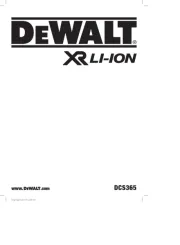
3 Augustus 2025
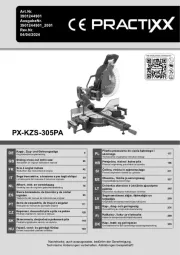
30 Juli 2025
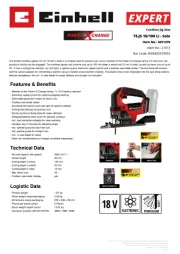
29 Juli 2025
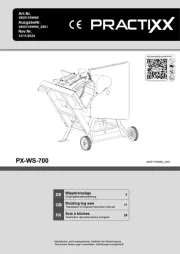
29 Juli 2025
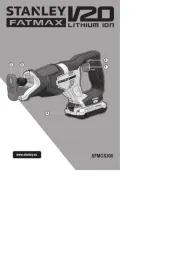
29 Juli 2025
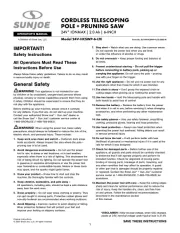
29 Juli 2025
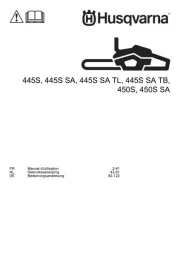
28 Juli 2025
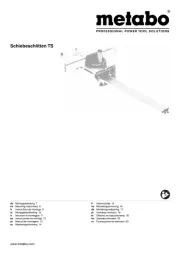
23 Juli 2025
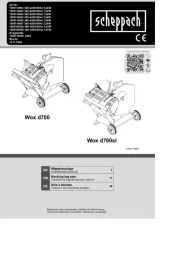
21 Juli 2025
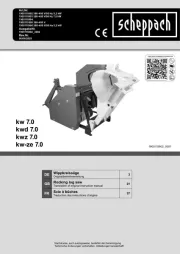
21 Juli 2025